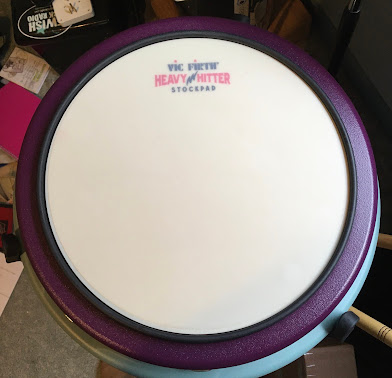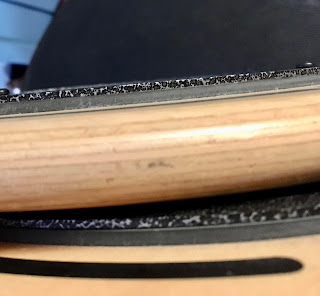If you read various chat boards (Reddit, DrumForum.com, etc.) you may notice a lot of griping about two things:
1. The increasing price of wood drum sticks; and
2. The decreasing quality of wood drum sticks.
There’s some truth to both points.
1. Stick prices have slowly risen for years. Inflation is out of control these days, so that should surprise no one. Some makers have managed to hold off raising prices for quite awhile but had to bite the bullet this past year. Others have been slowly and steadily raised their prices little by little over time.
2. Drum stick quality and consistency from the big major brands (Vic Firth, Promark, Vater, et al) has been declining for some time now. Drum stick makers that once sold their pitch- and weight-matching as marks of excellence have grown quieter about that as consistency has suffered.
There are some salient reasons for both, and they are mostly beyond any company’s control.
A. Increasing scarcity of quality wood stocks due to deforestation and climate change. People don’t like to talk about climate change. Either they refuse to believe it’s real (though I don’t see how they can with today’s weather extremes), or they insist that it’s simply not a factor that affects wood quality. But the truth is that increased deforestation (to meet higher demand for wood in all industries) has helped speed up global warming, and the market’s impatience for mature raw wood has meant cutting trees before they have a chance to become “old growth.” That makes for a lot of naked, unshaded earth, and that means the weather gets hotter, faster. The global marketplace also adds climate pressure because of the increased carbon footprint required to harvest and transport raw materials from their source locations to the manufacturers for processing.
B. The lack of mature, old growth wood stocks has lent itself to cutting second-growth timber that is less dense and less stable, meaning a wider variance in wood grain and hardness. Both of these mean that as the wood dries, it can warp or crack more, which in turns means lower consistency in the quality and feel of sticks — and less durability — from pair to pair.
******
When I was a young drummer in the early 1970s, the big stick manufacturers didn’t match for pitch or weight. Instead, you pulled all the sticks out of the bin labeled with the desired size at the music store. You rolled them across the countertop to check for warping, pulled out the eight or ten straightest sticks and then tapped them lightly on the counter to check for pitch. On a good day, you might go home with two or three pairs of decent sticks that way. On a bad day, you’ll be lucky to get one decent pair. When I was a kid, that’s the way things were and I simply accepted it.
Only when the big stick makers started doing this at the factory did sticks become consistently better. And of course, because they were taking this labor in-house, sticks also started costing more. That’s not necessarily a bad thing. Nothing is free in retail.
But in the last ten years, wood consistency and quality from the big stick manufacturers began to suffer noticeably. Some people complained, and others went looking for another brand. European stick manufacturers began shipping their products overseas more, using European hardwoods that maintained a higher standard of quality. Higher-end shops like Steve Weiss began carrying those brands, making them available to a larger group of consumers, and the sticks caught on.
Add to this the rise of American craft makers like Cooperman and Reamer, with their beautiful hardwood sticks, and eventually we arrived at a time when American drummers got, to be honest, a bit spoiled.
And that’s when things began to fall down.
******
During the pandemic, while we stayed at home and chopped on practice pads and waited for things to oen up again, we also continued to buy drum sticks. Demand remained high. But makers could not keep up. Towards the end of the lockdown, first Cooperman and then Reamer announced that they would stop offering their sticks in Persimmon, because their old stocks had run low and the second-growth stocks on the global market were not up to their standards. Vic Firth began running out of favorite models regularly, and by early 2023 some models could not be found at any price in shops or online. Vic Firth and Promark began discontinuing their lowest-selling models. Vater simply ran out of select models and didn’t respond to my requests as to when they might return. At one point, the Big Three’s budget brands — Nova (Vic Firth), LA Special (Promark) and Goodwood (Vater) — also ran low at online dealers, a sure sign that bigger issues were affecting the global economy even among drum stick manufacturers.
The bottom fell out when the rumblings about quality grew louder on multiple online chat boards, and many of my drumming friends had given up on at least one or two of the Big Three in search of smaller, craft-oriented stick makers. (You can follow my adventures along the way in earlier posts on this blog, notably my testing of Harlan, Cooperman and Morgen sticks.)
******
Today, the drum stick market is not struggling — sales continue to hold steady — but it has changed.
Custom stick makers are suffering. Cooperman is blowing out the last of its old Persimmon stocks, and has switched over to mostly hickory. Reamer is using hickory only. Rick Dior, one of the finest craft stick makers in the country, suffered devastating losses to his house and his home-based workshop during recent catastrophic flooding in North Carolina. He was able to salvage a number of ready-made sticks to sell online, but has advised his customers that new sticks won’t be available for quite some time, perhaps up to a year depending on how quickly the mud can be cleared out and extensive repairs can be made. Frank Kincel at LaBckbeat has had a difficult time sourcing local mature hickory stocks that are up to his standards, as well as facing health challenges and mechanical issues with his lathe.
I still enjoy my Vic Firth sticks, though to be honest I mostly like older models that I find as NOS (New Old Stock) at online retailers. I also look for deals from select eBay sellers, and occasionally I find nicer used sticks in good shape on various secondhand sale sites.
Since I don’t play drumkit these days, I don’t really need a great quantity of any size. I’m content to keep a few pairs on hand of the pairs I use the most.
I suspect that students will have to settle for whatever they can find locally and make the best of it. Serious professionals will have to be a bit less picky, or guard the sticks they have a bit more carefully to make them last longer.
Younger drummers reading this post may scoff. I can’t really help them, sorry. They will have to find their own way forward to a more resourceful and sustainable drumming future.
To be honest, I’m glad I’m no longer playing professionally on a regular basis. It takes the pressure off having to be properly and fully equipped, and invites me to be grateful for what I have.
Happy drumming.










































